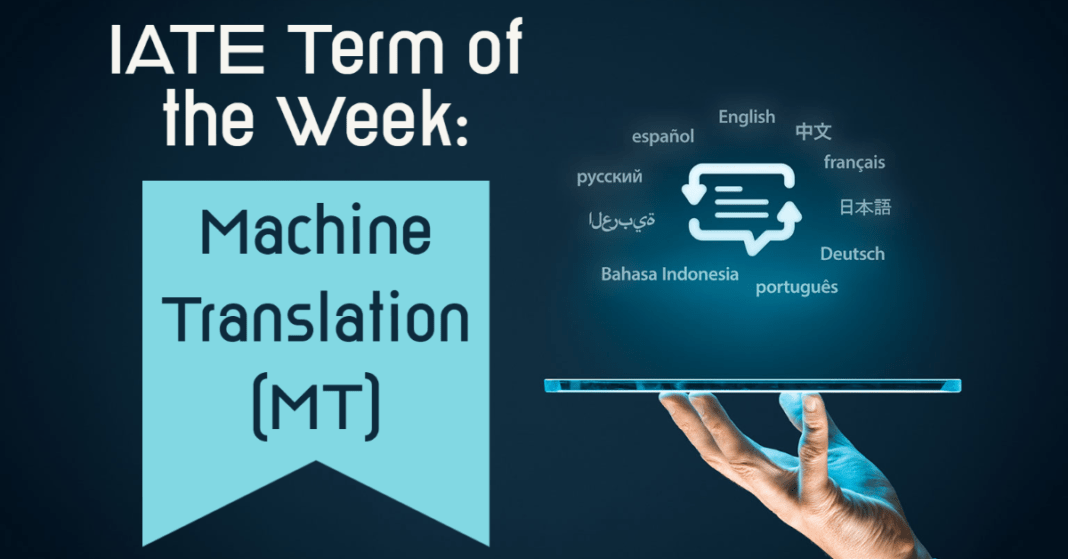The term Machine Translation (MT) is used to describe translations made by computerised systems from one natural language into another, with or without human assistance. In IATE the term is defined as “use of computers to translate texts from one language to another”.

In 1949, Warren Weaver, a researcher at Rockefeller Foundation, presented a set of proposals for machine-based translations, which were based on information theory and successes in code breaking during the Second World War. Later, in 1954, the Georgetown-IBM experiment started, and the IBM 701 computer automatically translated 60 Russian sentences into English for the first time in history. This was the first public demonstration of a machine translation system.
Thefollowing MT models have existed up to now:
- Rule-based machine translation (RBMT): it is based on linguistic information about source and target languages retrieved from dictionaries and grammars covering the main semantic.
- Example-based Machine Translation (EBMT): it is based on reused existing translations. The input is compared to a database of translation examples that identifies corresponding translation fragments and recombines fragments into a target text.
- Statistical Machine Translation (SMT): it is based on finding the most probable target language sentence for a source language sentence.
- Neural Machine Translation (NMT): it is based on neural network-based models which are taught probabilistic models of languages which allows them to come up with relatively high-quality translations of new source sentences.
Why is it important for the European Union?
The key term to answer this question is “multilingualism”. EU institutions translate documents out of and into the 24 official languages of the European Union, thus providing all EU citizens with immediate access to European texts in their own language and the opportunity to communicate with the institutions in their own language.
The European Commission’s Machine Translation system, called “eTranslation”, offers a cutting-edge neural machine translation service. It was officially launched on 15 November 2017, superseding the previous statistical MT system.
You can discover more about multilingualism here, and try eTranslation here (it is free to use for EU institutions, public administrations, universities, EU freelance translators, SMEs, European NGOs and projects financed by the Digital Europe Programme).
References
Hutchins, W.J. & Somers, H.L., An introduction to machine translation, Academic Press, London, 1993.
https://towardsdatascience.com/evolution-of-machine-translation-5524f1c88b25
https://www.surrey.ac.uk/events/20220304-introducing-neural-machine-translation-nmt-translators
https://commission.europa.eu/resources-partners/etranslation_en
Written by David Sánchez Wanthawong

Born in Madrid, Spain, David holds a Bachelor’s degree in Telematics Engineering from the University Carlos III of Madrid. He is also half Thai and has participated in some Erasmus+ YE that made him want to know more about cultures. After working in software quality assurance in the private sector, he is now a Schuman Trainee at the Applications & IT Systems Development Unit in the EP’s DG for Translation.

